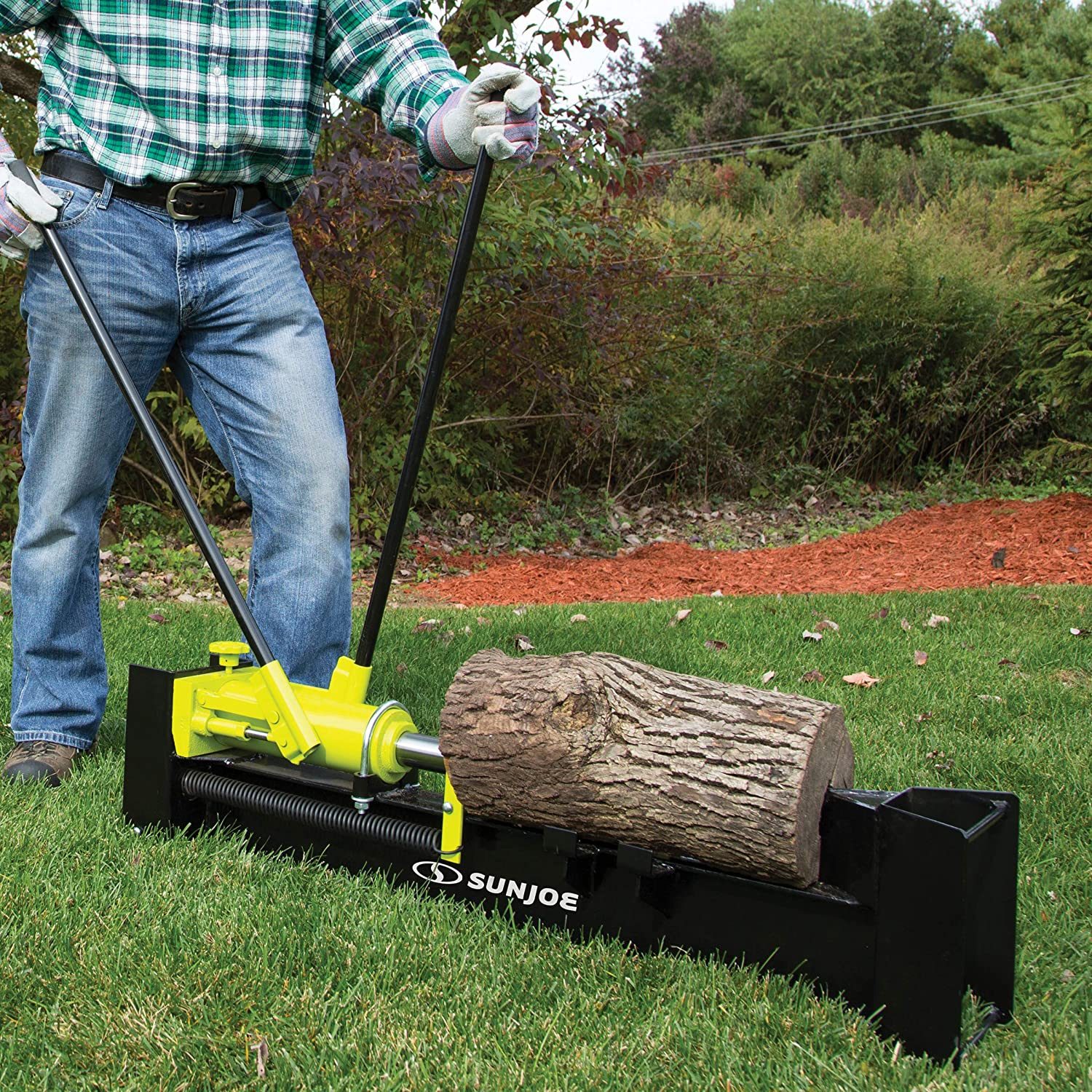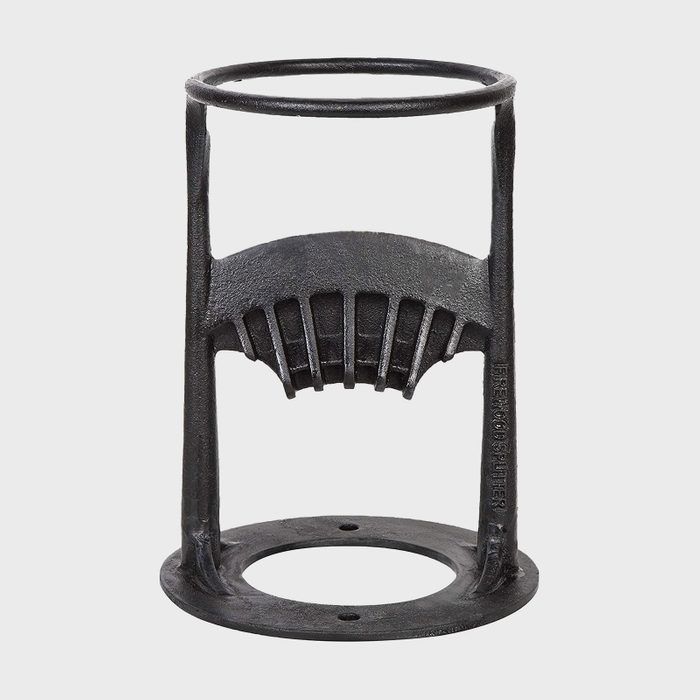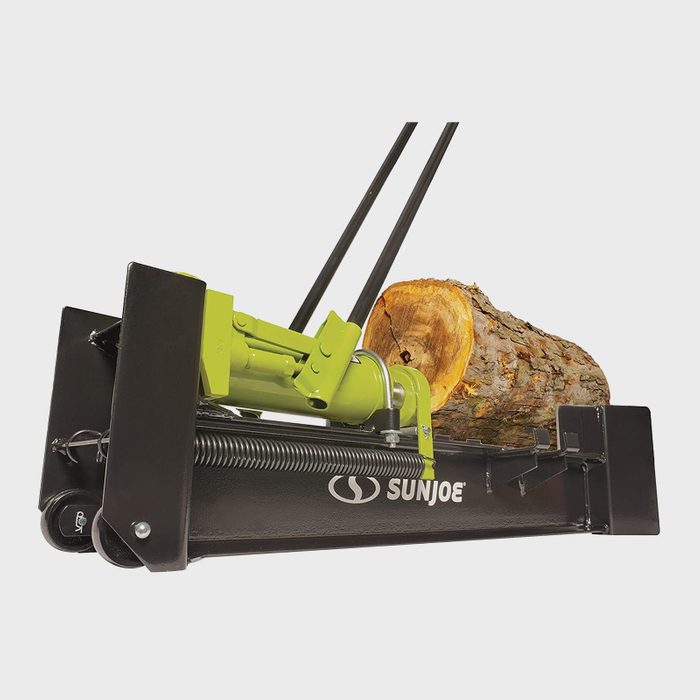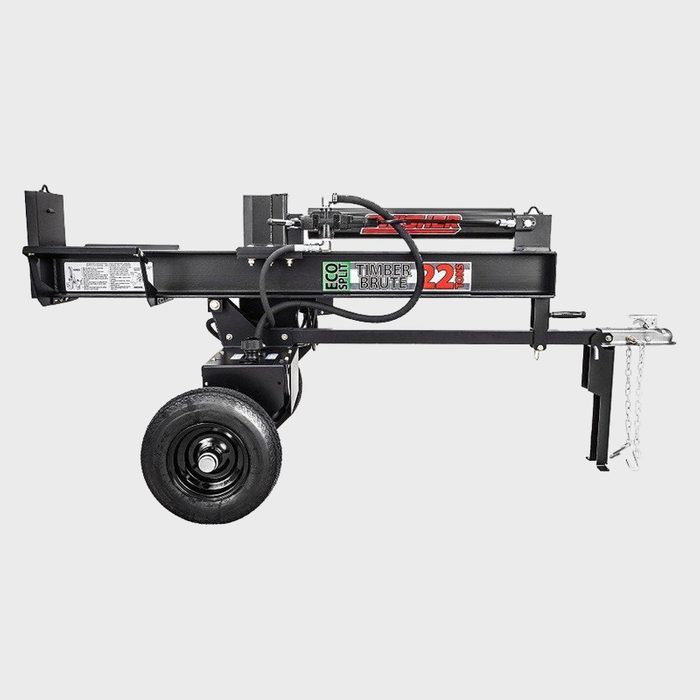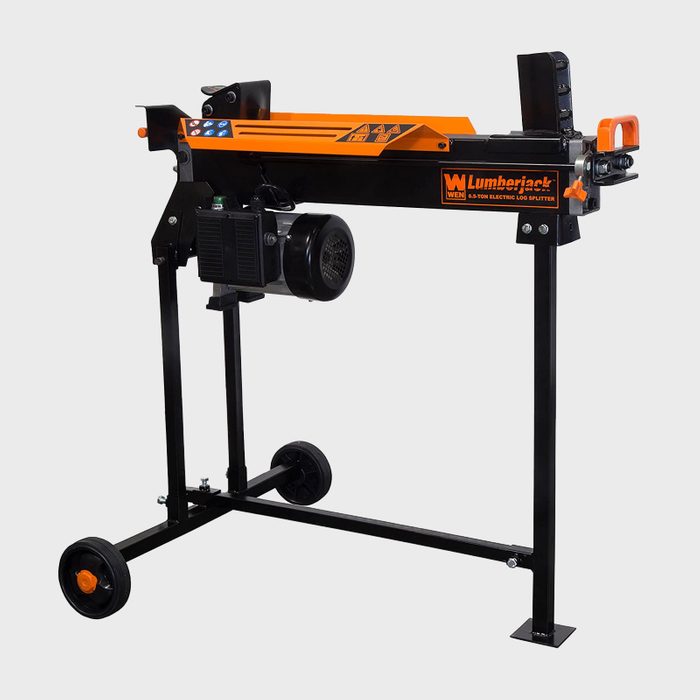Pros:
-
Requires minimal effort to make kindling
-
Manually powered (no risk of power issues)
-
No need for log stabilization
-
Affordable
Cons:
-
Not ideal for those with grip strength or back problems
If you’re looking for a tool to make kindling near a campfire, the Inertia Wood Splitter is for you. This isn’t a hydraulic machine like most other log splitters. You supply the force yourself with a mini sledgehammer.
It requires less effort to use this tool than an axe. And because there’s no need to stabilize the log, there are fewer misses. Just set the log in place against the blade and swing away to split it into easily burnable kindling.
Pros:
-
Manually processes heavier logs with a hydraulic ram
-
Wheeled design is easy to transport
-
Faster and easier than axe-based splitting
-
Capable of delivering 10 tons of force
Cons:
-
Not ideal for smaller rounds (those around 12-inches or so)
The Sun Joe Hydraulic Log Splitter is no kindling splitter. Capable of developing a force of 10 tons— more than some electric models—it turns 18-inch x 8-inch or smaller logs into firewood with a manual hydraulic ram.
It has wheels so it’s easy to move around the yard or the basement, making it one of the most portable log splitters. You operate it by pumping a pair of handles. It’s a bit of a workout, but nowhere near as taxing as swinging an axe. And it’s a lot faster. It’s one of the best log splitters if you’re trying to turn into firewood quickly without making a major financial investment.
via woodsplitterdirect.com
Pros:
-
Delivers 22 tons of heavy-duty force
-
Won’t stall
-
Splits logs up to 25 inches
-
Works in both vertical and horizontal positions
-
Emission-free
-
Can be used indoors
Cons:
-
On the more expensive side, but well worth the price for those who prefer to work in garages, barns and sheds
The Swisher Eco Split develops a respectable 22 tons of force and won’t ever stall because of a clogged carburetor. It’s a little pricey and must be towed on site. But it splits logs up to 25 inches long, bigger than most gas-powered models.
This splitter works in vertical and horizontal positions. And because it’s emission-free, you can set it up in your basement or garage and work out of the rain and snow.
Pros:
-
Easily handles smaller logs
-
15-amp motor
-
20-second cycle from beginning to automatic retraction
-
Processed up to 120 logs an hour—a massive feat for a light-duty machine
Cons:
-
Somewhat expensive, though reviewers note that the wheeled stand and side-mounted cradle makes it worth every penny
Put your 20-inch by 10-inch or smaller log on the Wen 6.5-Ton Lumberjack and let its 15-amp motor do the work. This versatile machine has a 20-second cycle from beginning to full automatic retraction and can handle up to 120 logs an hour.
The unit is easy to use on its built-in wheels or with its 34-inch wheeled stand. The side-mounted cradle supports the log and prevents it from falling.
Pros:
-
Gas-powered light duty log splitting
-
Towable and easily carted manually
-
Splits up to 180 logs per hour
Cons:
-
Only operates in a horizontal position
A more compact version of the 34-ton model, the Champion Seven-Ton Log Splitter is towable but also light enough to move around manually. It handles smaller logs than the more powerful version (up to 19 inches long and 50 pounds in weight), and it has a slightly longer return cycle and smaller production rate (180 logs per hour).
This Champion model operates only in the horizontal position. But because it also has an integrated log catcher, you don’t have to worry about your back. The blade splits dense hardwood logs into and cuts through knots as if they weren’t there.
What to look for in the best log splitters
Log splitters can be manual or gas-powered. Electric log splitters are also popular options, and can be mounted on the back of a tractor. Here are some things to consider when looking for the best log splitters for your project:
- Power: “Wood splitters are all about power—the splitting force they produce,” says Christofora. Power capabilities range from five tons to more than 40 tons. He recommends buying the most powerful one your budget allows.
- Maneuverability: This suffers as power increases. The most powerful gas-powered log splitters must be towed and often require two people for assembly. Smaller electric and manual ones are much easier to store and deploy.
- Maintenance: All tools require cleaning and lubrication. Electric and manual log splitters need far less maintenance than gas-powered or tractor-mount models.
- Log size: Each splitter has limits on the size of the logs it can cut. The most powerful gas-powered models can handle logs more than 24 inches long and weighing up to 100 pounds. Electric models can typically handle 20 inch logs no more than 10 inches in diameter.
- Type of wood: Underpowered machines can’t always handle dense hardwoods like oak and maple, especially if it’s unseasoned. Go for extra power if you’re splitting hardwoods.
- Ram return speed: Many log splitters have an automatic return feature that resets the ram after each split. The length of the return cycle helps determine the suitability of a particular model for large scale production.


















